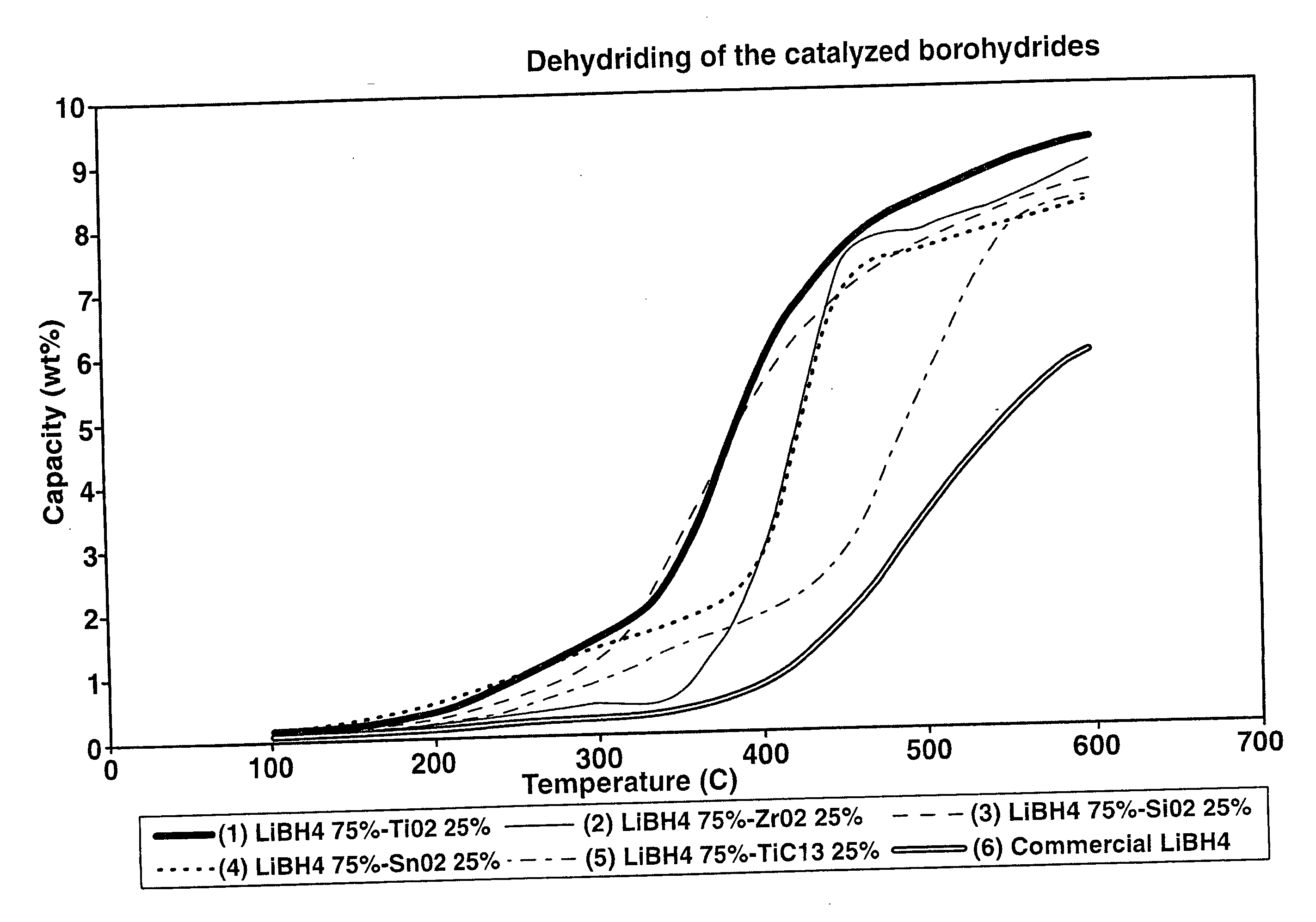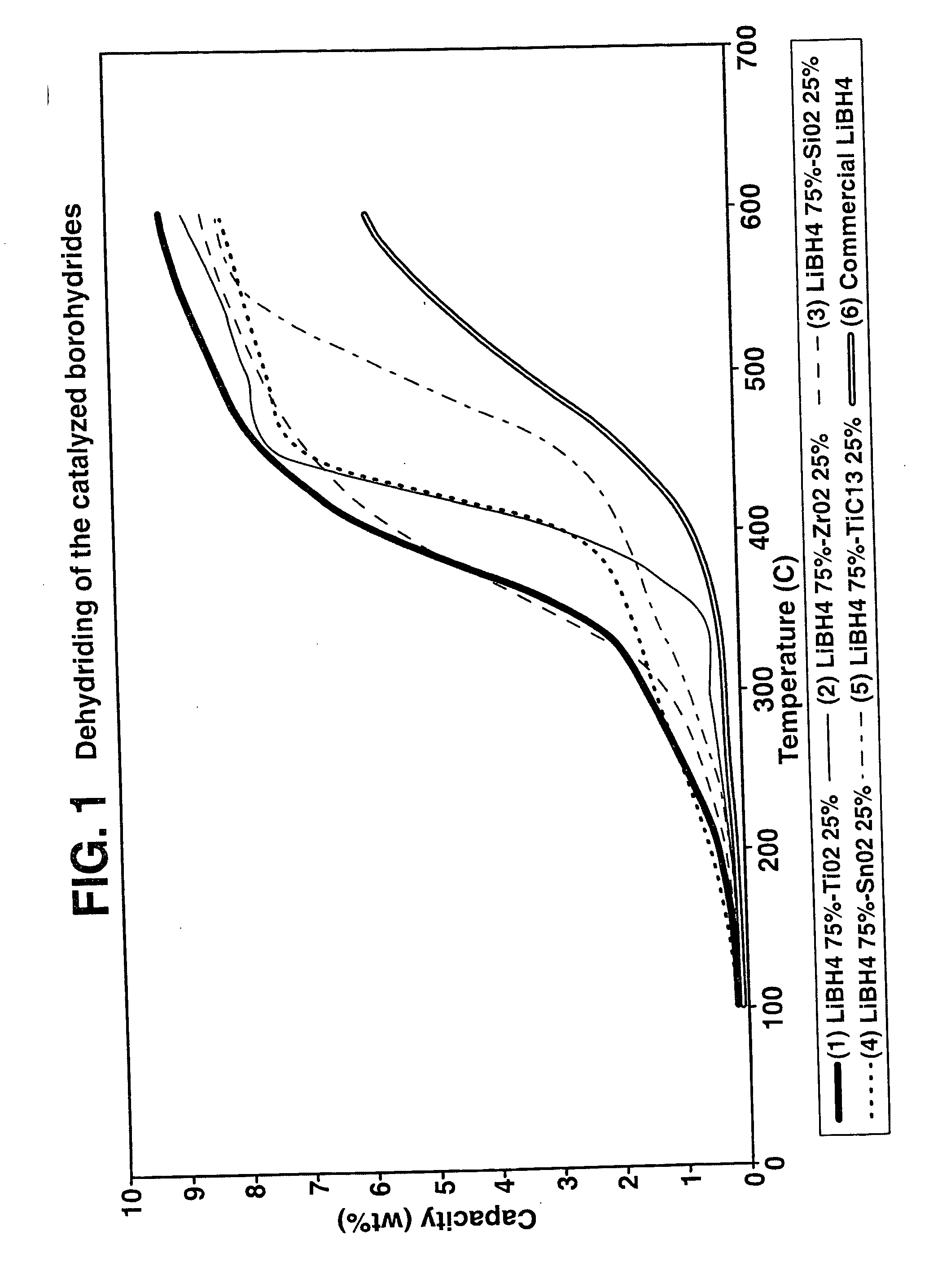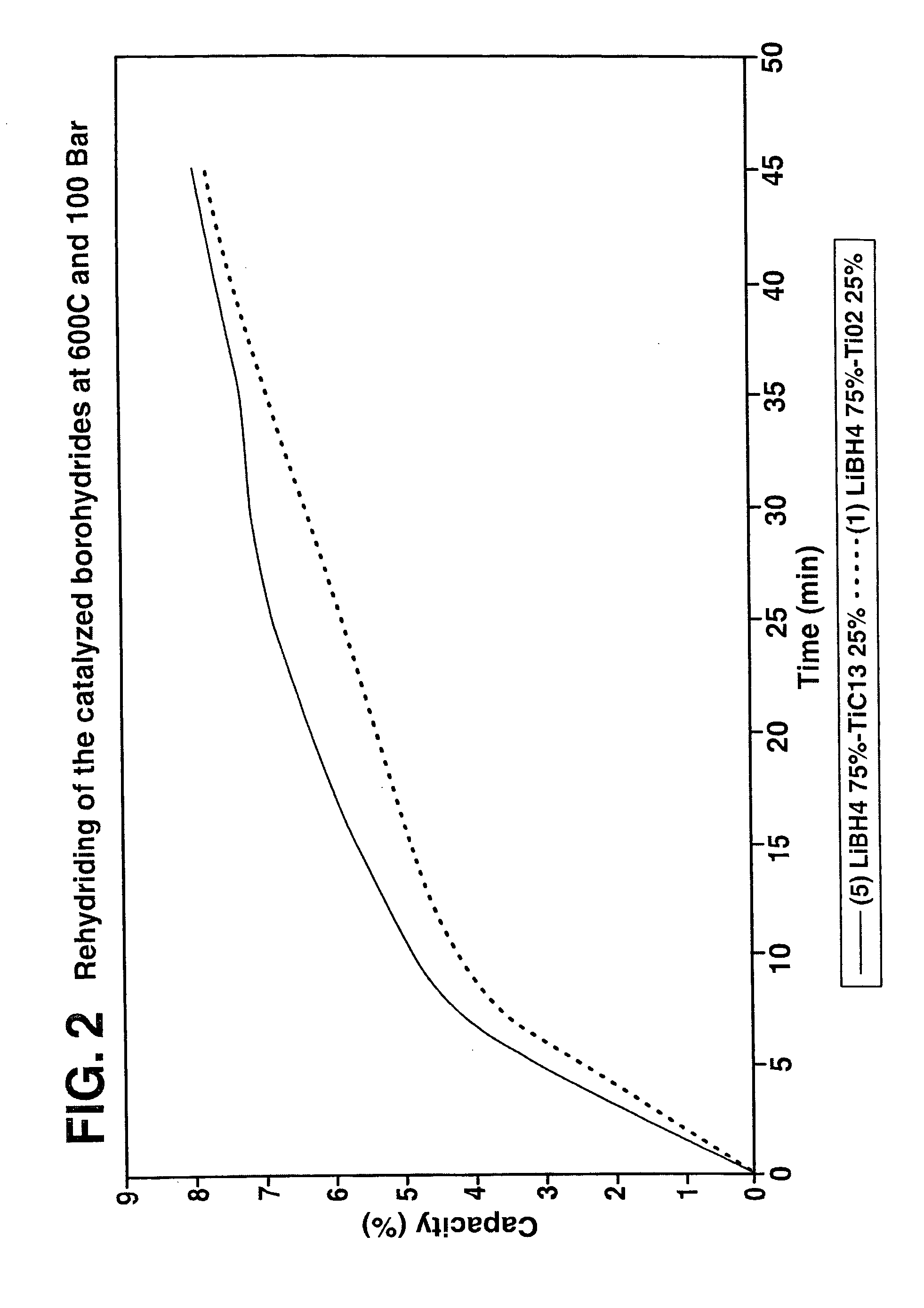Destabilized and catalyzed borohydrided for reversible hydrogen storage
a borohydride and hydrogen storage technology, applied in the direction of monoborane/diborane hydrides, physical/chemical process catalysts, other chemical processes, etc., can solve the problems of libh/sub>4/sub>cannot be easily rehydrided, borohydride hydrogen release at very high temperatures, and hydrogen release mechanism
- Summary
- Abstract
- Description
- Claims
- Application Information
AI Technical Summary
Benefits of technology
Problems solved by technology
Method used
Image
Examples
example 1
[0053] Using the protocol set forth above, LiBH4 was mixed with 0.2 molar magnesium and used to obtain the partial substitution. As seen in reference to FIGS. 6 through 8, the destabilized material LiBH4+0.2Mg releases hydrogen at 60° C. comparing with the commercial pure LiBH4 that releases hydrogen at 325° C. At room temperature, two Raman active internal BH4−1 vibrations v4 and v′4 occur at 1253 and 1287 cm−1 respectively, and two overtones 2v4 and 2v4′ at 2240 and 2274 cm−1, respectively as spectrum 2 shows in FIG. 7. However, the V4 v′4, and 2v4 stretching disappears from the spectrum after the addition of the destabilized LiBH4+0.2 Mg. The 2v4′ stretching is weakened and shifted to 2300 cm1 as the spectrum 1 shows and is indicative that the B—H binding strength is reduced by partial LI+1 substitution. The weakened bond results in a lower dehydriding temperature. As further seen in reference to FIG. 8, the partially substituted LiBH4 material is able to undergo multiple cycles ...
example 2
[0054] LiBH4 was combined with 0.3 MgCl2 plus 0.2 molar TiCl3 and is subjected to the MTDP substitution process described above. As seen from data set forth in FIG. 9, the partially substituted product has improved hydrogen desorption release properties in terms of temperature and percent of hydrogen released at temperatures below 500° C. when compared to a commercial LiBH4.
[0055] As set forth in FIGS. 10 and 11, data is set forth showing the repeated desorption and rehydrogenation capabilities respectively of the partially substituted LiBH4.
example 3
[0056] LiBH4 was mixed with 0.5 MgH2 plus 0.007 TiCl3 and processed according to the MTDP substitution steps described above. Set forth in FIG. 12 is the hydrogen desorption data of the resulting product at the indicated temperatures.
[0057] In FIG. 13, rehydrogenation data of the partially substituted LiBH4 is set forth.
PUM
| Property | Measurement | Unit |
|---|---|---|
| particle size | aaaaa | aaaaa |
| temperature | aaaaa | aaaaa |
| melting point | aaaaa | aaaaa |
Abstract
Description
Claims
Application Information
 Login to View More
Login to View More - R&D
- Intellectual Property
- Life Sciences
- Materials
- Tech Scout
- Unparalleled Data Quality
- Higher Quality Content
- 60% Fewer Hallucinations
Browse by: Latest US Patents, China's latest patents, Technical Efficacy Thesaurus, Application Domain, Technology Topic, Popular Technical Reports.
© 2025 PatSnap. All rights reserved.Legal|Privacy policy|Modern Slavery Act Transparency Statement|Sitemap|About US| Contact US: help@patsnap.com



